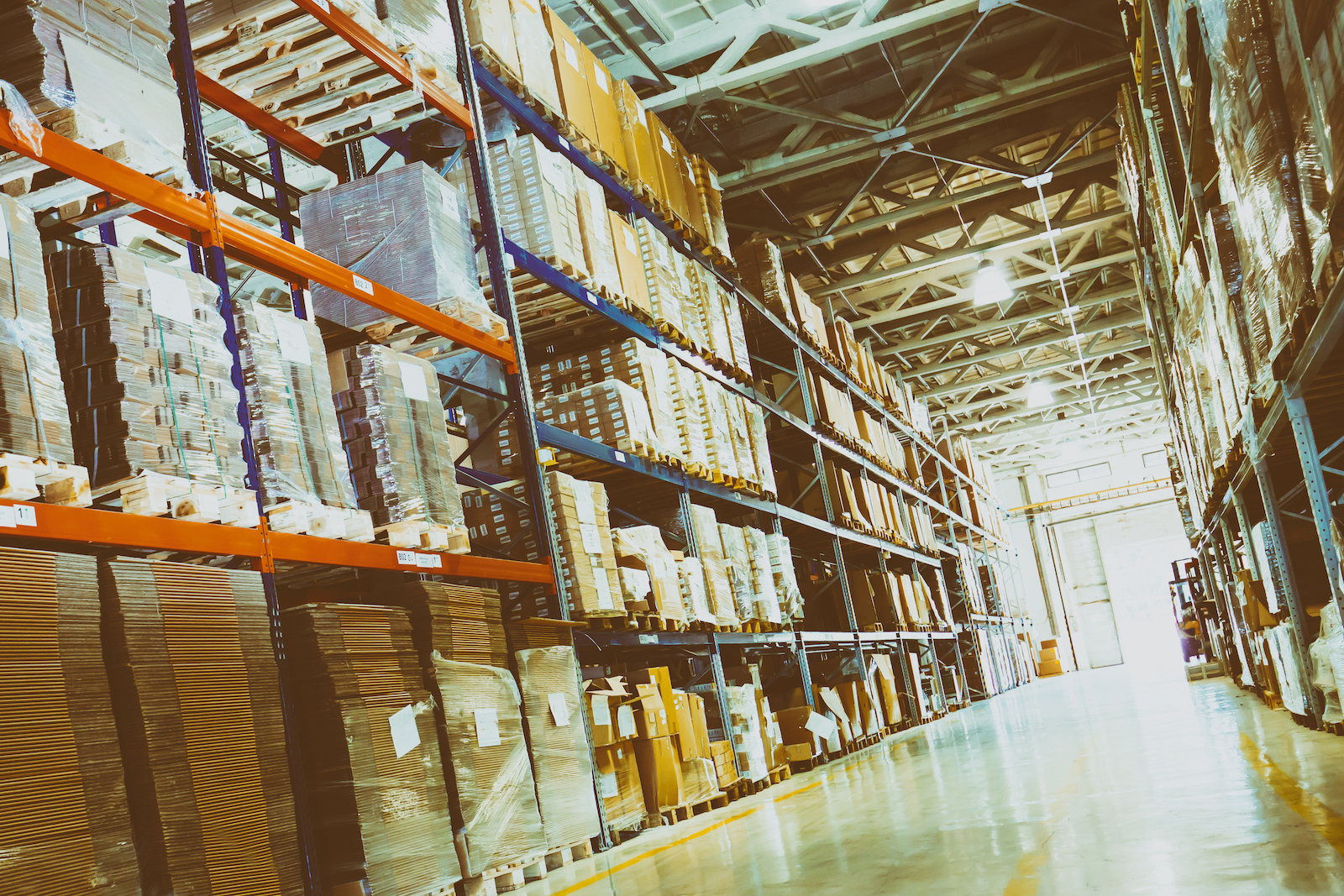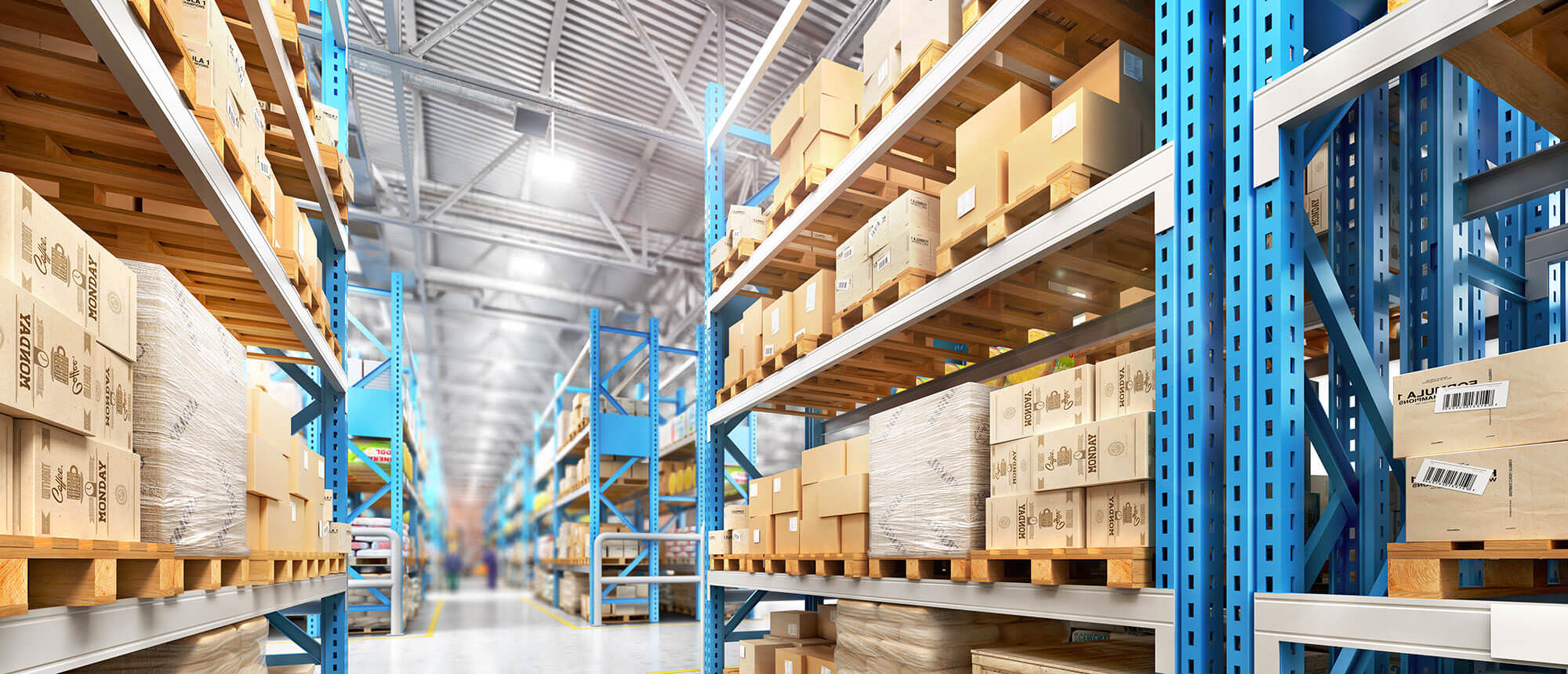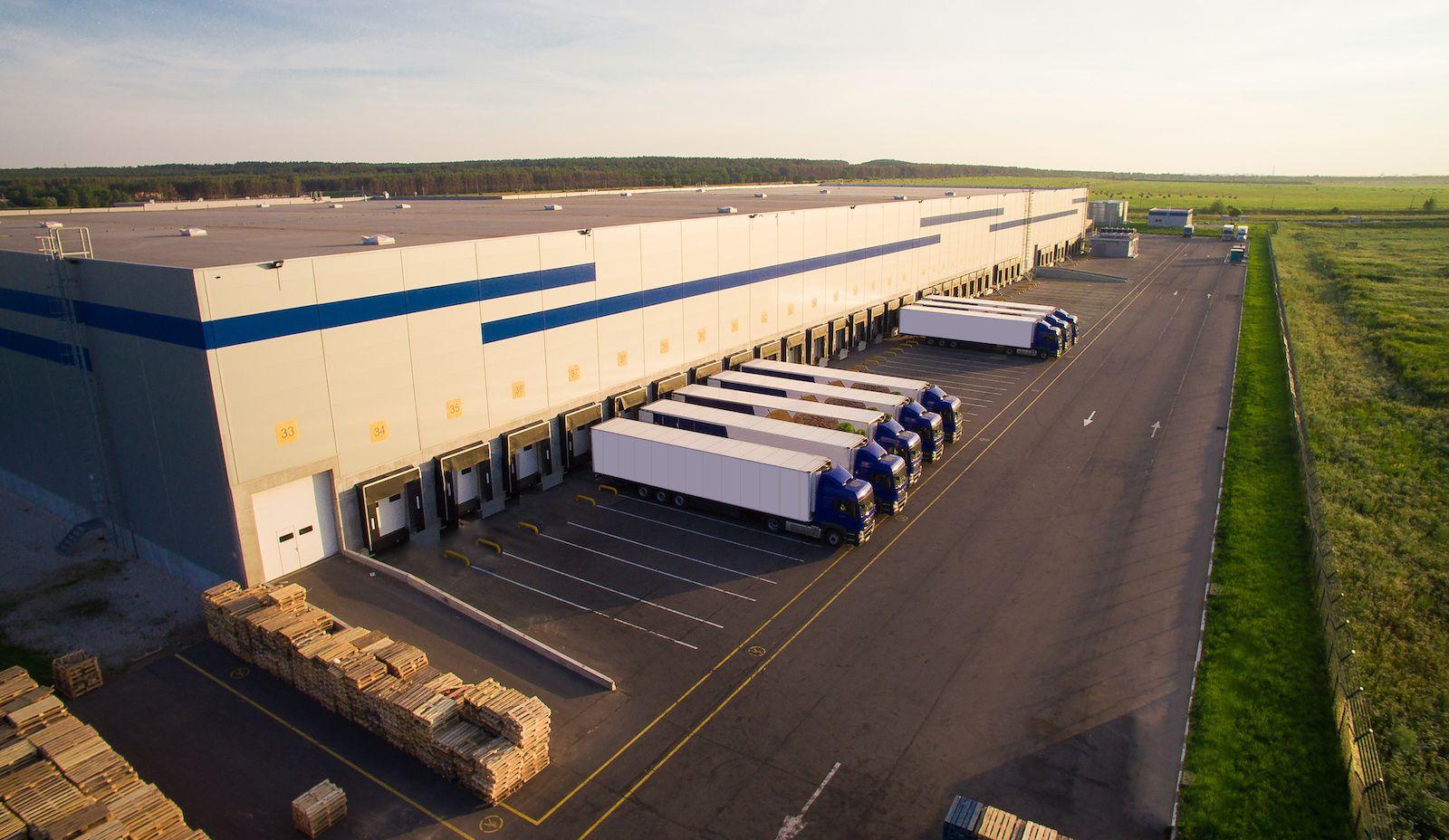Table of Contents
** Minutes
What does a warehousing solution do?
How do fulfilment centres work?
What is a fulfilment warehouse?
What are the differences between warehousing and fulfilment centres?
Benefits of using a fulfilment centre
3 examples of companies using fulfilment centres
What do you want to learn?
The terms warehouse and fulfilment centre (or distribution centre) are often used interchangeably but can have very different connotations. Both are large buildings that hold inventory for businesses that sell goods; however, the use cases and services provided are often quite different. Let’s break down each option, so you have a better idea of what the best ecommerce shipping solution is for your business.
What does a warehousing solution do?
When we talk about a warehousing solution, we’re referring to a company that stores products for an extended period of time. A warehouse is a large storage centre or industrial space designed to house inventory in bulk. You will see equipment like forklifts and containers, with shelves stacked high and stocked with large quantities of products.
There are warehousing providers that are geared toward wholesale fulfilment and businesses that primarily do wholesale orB2B ecommerce orders in huge quantities. Some large retailers will have their own warehouse(s) in which to store excess inventory, while others rent space in a warehouse in conjunction with other ecommerce businesses.
Leasing warehouse space is typically more cost-effective than buying for mid-sized and small businesses, though pricing depends on the lease terms available. It’s also worth noting that many logistics warehouse tenants can expect to see a 10% rate hike starting in 2021, due to a high demand for warehouse expansion and construction.
Some small ecommerce sellers may choose to rent more cost-effective space, like local lockers or inventory storage units if they don’t have space at home. That way, they keep some inventory on hand and retrieve more when they’re running low.
What is a fulfilment centre?
A fulfilment centre is a part of the supply chain and serves as the hub for all logistics processes needed to get a product from the seller to the customer. It handles the entire order fulfilment process, ranging from order picking and processing to packaging and shipping. A third-party logistics (3PL) provider, such as ShipBob, uses the fulfilment centre to receive, process, and fulfil customer orders for ecommerce retailers that are looking to streamline their operations. A fulfilment centre exists to get online orders to customers in a timely fashion and relieve ecommerce companies of managing this crucial-yet-challenging process.
How do fulfilment centres work?
Fulfilment centre operations consist of the work that helps get online orders to your doorstep — also referred to as the order fulfilment process. An ecommerce business’s inventory is stored strategically in a 3PL’s fulfilment centre in preparation for fulfilling customer orders. After a shopper completes a purchase on an ecommerce store, inventory is picked and boxes are packed, then labelled for shipment.
Fulfilment centres can process both business-to-business (B2B) orders — typically a high volume of product that is sent to a big-box retailer — as well as business-to-consumer (B2C) orders, which are shipped directly to an individual consumer’s home.
When a seller outsources ecommerce fulfilment, the 3PL is completing the fulfilment process on the store owner’s behalf. This includes everything from inventory management to negotiating rates with shipping couriers.
Outsourcing order fulfilment processes to a 3PL can make it easier to manage inventory, improve customer service, and save the seller lots of time to focus on more strategic tasks.
What is a fulfilment warehouse?
A fulfilment warehouse is often interchanged with the term “fulfilment centre”. A stand-alone warehouse differs drastically from this. A warehouse is usually a place where inventory is just stored, while a fulfilment warehouse has many other jobs besides storage.
The average American shipping warehouse is larger than 25,000 square feet. About 35% of warehouses are smaller than the average shipping warehouse, while 50% or so of the current warehouses are 50,001 square feet or larger.
What are the differences between warehousing and fulfilment centres?
Let’s look at a few of the nuances of these two buildings that hold inventory.
Long-term vs. short-term storage
While there is a warehousing component to a 3PL’s fulfilment centre — storing a merchant’s inventory in its designated locations — the main goal of a fulfilment centre is to turn inventory over quickly.
Ideally, inventory should not sit in a fulfilment centre for more than a month, or the merchant may be stuck paying high warehousing fees. However, sellers should proactively send more inventory to their fulfilment centres to make sure there is always enough product on hand prior to shipment. After all, being productive, proactive, and creative is one of the most important skills for all salespeople these days.
The role of a warehouse or an on-demand warehousing solution is to store products, whereas the role of a fulfilment centre is to efficiently meet customer expectations around shipping. This is made possible when retailers store inventory in fulfilment centres located near their customers, to reduce shipping costs, time in transit, and shipping zones.
Operations
Unlike warehouses that are more static or inactive, a fulfilment centre has continuous movement and is a much more complex operation. A 3PL provides a variety of order fulfilment services in a fulfilment centre, including:
- Receiving Inventory
- Generating pick lists and picking products
- Kitting and assembling items
- Packing boxes
- Labeling shipments
- Shipping orders
- Managing returns
As far as what’s happening operationally in a warehouse, the main action occurs when inventory is added or transferred out. There are not many additional services offered.
Big box companies operate on a similar level — Amazon warehouses and Amazon fulfilment centres treat them more as sortation centres and delivery stations. Packages move on the conveyor belt while workers sort small and large orders and prepare them for shipping with Amazon Delivery or a third-party company like USPS.
Frequency of pickups by shipping couriers
A fulfilment company can have relationships with many different shipping couriers. Since a fulfilment centre operates to fulfil direct-to-consumer orders as soon as they are placed, they need shipping couriers to pick up shipments at least daily. This ensures orders will be delivered to consumers in time as promised.
Depending on the exact services a fulfilment company offers, shipping couriers may need to pick up customer orders for any guaranteed same-day or next-day shipping options chosen by customers at certain times each day. Other couriers and services will have regularly scheduled pickups, for both domestic and international shipments.
Retail fulfilment companies will have cutoff times for orders to be placed by. For example, customer orders placed by noon local time will be processed in the fulfilment centre and shipped out the same-day.
Conversely, a warehouse will typically need scheduled, less frequent pickups, since it is more cost-effective to ship freight and have boxes wrapped together on a pallet instead of generating individual shipping labels.
Freight companies try to pool inventory from various pickup locations for PTL and LTL freight shipments, which can cause a delay in pickup/delivery time, so merchants should allow for a longer turnaround time from prep to pickup.
Benefits of using a fulfilment centre
What are the top advantages to online sellers that use fulfilment companies?
Eliminate storing inventory and packing boxes
Unless you’re a brick-and-mortar retailer, managing a physical space may not be ideal. It’s no surprise that many ecommerce businesses want to avoid the hassle of storing inventory or dealing with ecommerce warehousing.
Furthermore, if you don’t want to pack boxes and run to the post office every day, a fulfilment centre is a great alternative. The number one sign that it’s time to use a fulfilment centre is no longer being able to keep up with your increasing order volume. Fulfilment providers, whether they specialize in wholesale fulfilment or retail fulfilment, help you spend less time worrying about packing supplies and post office lines and give you more time back to grow your business.
Focus on the big picture
While packing boxes and shipping customer orders are critical to meeting consumer expectations, they are generally tasks that can be easily outsourced. Entrepreneurs and ecommerce store managers have an endless to-do list, so they must stay laser-focused on the tasks that only they can do and those that will help them scale and make money.
Taking the time spent on order fulfilment and instead focus on marketing, customer service, and product management can help ecommerce businesses be more strategic and less operational. There will never be enough time in the day, but using a professional fulfilment centre can help sellers be more proactive in other areas of the business.
“Working with ShipBob has allowed us to focus on the important parts of running our business and lets someone else take care of the shipping.”
Brett Miller, CEO, BRIK
Leave it to the experts
Inbound and outbound logistics can be challenging, and a fulfilment centre is a complex machine with many moving pieces that must simultaneously work together. From order processing and inventory management to preparations for peak shopping seasons, fulfilment companies are domain experts and have seen it all.
A single fulfilment centre handles operations for countless ecommerce businesses and ships millions of orders out regularly. Because of this, their volume and experience make them a strategic partner.
Fulfilment companies can also drive greater efficiencies in everything from the low shipping rates they negotiate with couriers to the number, size, and locations of their fulfilment centres — all to be utilised by the ecommerce businesses they work with.
“When you’re dealing with logistics, you want everything to flow, and ShipBob has been able to help out with pretty much every shipping issue we’ve come across. Knowing that your shipping department is taken care of is one less thing you have to worry about, and it allows you to focus on growing your business.”
Toby Davis, Assistant Director of Operations, Azurro Group
Automate warehousing and fulfilment
Modern fulfilment companies keep technology at the centre of their fulfilment services. This means that every step of the fulfilment process is automatically documented in real-time for ecommerce businesses to know the status of their inventory and each order in the fulfilment centre without having to be there.
This is possible when fulfilment solutions have built-in integrations with ecommerce platforms and marketplaces. This connection enables each customer order to be automatically sent to fulfilment centre to get picked, packed, and shipped out. Once shipped, tracking info is pushed back to the ecommerce store and shared with the customer.
3 examples of companies using fulfilment centres
Many ecommerce businesses make the choice to work with a fulfilment company after self-fulling orders themselves. Read a few stories below.
1. BAKblade
ShipBob customer Matt Dryfhout, the President and Founder of BAKblade, shared his ecommerce business’s story of moving to a fulfilment centre: The BAKblade team wanted a fulfilment company with straightforward pricing that would also give them more control over their brand. Fulfilling orders through ShipBob’s fulfilment centres means that there are no longer any logistical headaches due to ecommerce fulfilment, allowing the BAKblade team to focus instead on selling great products to move their business forward.
The positive customer feedback and quick deliveries of customer orders paired with the cost savings associated with using several fulfilment centres across the country have helped this business scale without having to manage their own warehouse and also run their own warehouse audits. BAKblade enjoys visibility into what has shipped, real-time inventory counts across fulfilment centres, and distribution metrics and inventory reports to understand their business performance.
2. Nature’s Ultra
Nature’s Ultra started to experience a surge in orders last year. Andrew Hardy, COO, wanted to get help on the front-end to ensure a long-term relationship with a fulfilment centre that had a lot of room for scalability. They quickly came to find how massive and difficult fulfilment was, which required their focus and prevented them from focusing on our core products.
They chose ShipBob because off its Amazon-like delivery capabilities and use ShipBob’s fulfilment centres in Dallas, Texas, Chicago, Illinois, and Bethlehem, Pennsylvania. “ShipBob helps us to maximise our shipping and ultimately our growth potential. 100% of our orders are going out via 2-day shipping.” It’s helped them grow from $70,000 in sales in 2018 to over $7 million in sales in 2019.
3. Rainbow OPTX
Noel Churchill, Founder of Rainbow OPTX, was storing inventory and shipping orders out of his garage. He bought racks and organised all of the products, but the space was at maximum capacity. He knew he had to make a transition in order to scale. He could lease a warehouse somewhere and grow into the new space, but with how seasonal his business is, he would have to hire people to scale up over the summer and let them go in the fall, which didn’t appeal to him.
He partnered with ShipBob and felt freedom, with new time to read through customer feedback, make sure customers are happy, and work on his brand direction. Working with a third-party fulfilment centre never felt like operations were out of his hands. “ShipBob takes really good care of their customers. Their software is always improving and the fulfilment services are always advancing,” Noel said. With ShipBob’s 2-Day Express Shipping Program, they’ve even seen a 24% increase in AOV.
Streamline fulfilment with ShipBob’s WMS
Need help managing fulfilment, but don’t want to outsource it? ShipBob has a best-in-class warehouse management system (WMS) that brands can use in their own warehouse to improve inventory management, reduce errors, and scale in-house operations with ease.
Brands can even adopt a hybrid fulfilment model, employing ShipBob’s WMS technology in their own warehouses while simultaneously leveraging ShipBob’s fulfilment services in any of ShipBob’s fulfilment centres across the US, Canada, Europe, and Australia to improve cross-border shipping, reduce costs, and speed up deliveries.
Fulfilment centre FAQs
Get answers to some of your burning questions about fulfilment centres!
Do fulfilment centres handle inventory management?
Yes! Fulfilment centres receive inventory, sort and shelf products in their respective bin, shelf, or pallet locations, and keep track of units on-hand. The goal of warehousing inventory in a fulfilment centre is to turn over stock quickly and ship orders out as efficiently as possible.
Most fulfilment centres will provide technology to help ecommerce businesses manage their inventory from afar, including inventory tracking tools that help you know when to proactively reorder product to prevent stockouts.
How many square feet do I need?
If you choose to self-fulfil your customer orders, the total square footage you need to manage your inventory will depend on several factors.One is the amount of unique SKUs you have. For example, if you sell shirts on your ecommerce store, each size and colour will need its own storage location.
Two is your order volume. If you are only shipping 150 orders a month, you may be able to keep your inventory in your basement, garage, etc. But if you are shipping several thousand customer orders a month, you will need the space to scale your fulfilment operation and store excess inventory. You will always want enough extra inventory on hand to prevent stockouts.
Finally, you will need to understand your growth plans to ensure you don’t move into or lease a space that you will immediately outgrow.
Thanks to ecommerce, warehouse space is becoming more difficult to find these days. And it can be expensive to rent or purchase warehouse space in the locations where your customers reside, such as shipping to major cities. If you work with a fulfilment company, each fulfilment centre will likely have hundreds of thousands of square feet shared among ecommerce businesses.
Can a fulfilment centre do one- or two-day delivery?
Yes, many fulfilment centres offer expedited delivery options, including same-day and two-day shipping. The exact services will depend on the geographic location of the fulfilment centre, the technology and operations in place, and the couriers used.Read the Guide to Offering Affordable 2-Day Shipping to learn more.
How does order processing work?
An order is processed after a customer makes a purchase on your ecommerce store. The ecommerce platform that powers the store will send the order details to the technology used at the fulfilment centre.This alerts fulfilment centre staff to retrieve the ordered products, pack them into a box, label the package, and get the order shipped.
From there, tracking information can be pushed back to the ecommerce platform and shared with the customer so they know where their order is every step of the way.
What is a good price for fulfilment solutions?
When self-fulfilling customer orders, you will be responsible for procuring and paying for your warehouse space and equipment, staff salaries, warehouse management system, workers’ comp and liability insurance, boxes and packing supplies, postage, and more. Given the many direct and indirect logistics costs, the exact cost is often underestimated.
The cost of outsourcing fulfilment will vary among fulfilment companies, but typically your fees will include receiving your inventory, warehousing or storing items, and shipping products. Depending on the fulfilment provider, there may also be individual fees for each task, such as warehouse picking, packing, among other line items.
“Even when evaluating other 3PLs, ShipBob was by far the easiest, most reasonably priced option. Other 3PLs gave me confusing pricing with many per-item fees, which were hard to grasp and calculate ultimate costs. Thinking big picture, it was an incremental cost for me to ultimately sell a lot more. My business has tripled and I got my life back.”
Anastasia Allison, founder of Kula Cloth
Outsourcing fulfilment services may end up being more expensive than self-fulfilment, but it often is done to save time. Since each fulfilment company prices their services slightly differently, you will need to examine the entire fulfilment cost, taking every possible fee into consideration.
What kind of customer service should I expect?
While fulfilment companies strive for perfection, fulfilment services and shipping are prone to errors. With shipping couriers, your customers will experience damaged, lost, or stolen packages at some point. While inevitable, it’s how you, with support from your fulfilment company, will help your customer through this process that will ultimately influence their experience.
“From day one, we’ve appreciated the hands-on time ShipBob spent with us. Our Account Manager has worked hard to understand our needs and offered more flexibility than other 3PLs. They have used their expertise to give us business-specific solutions that have really made a difference. ShipBob is really committed to their customers and keeping themselves accountable.”
Pablo Gabatto, Business Operations Manager at Ample Foods
Fulfilment companies should empower you to run your ecommerce business with the right tools and guidance. Depending on your order volume, you may have a dedicated account manager. Otherwise, expect a team to support your business and answer any questions you have.
The service you receive may also depend on whether the fulfilment company staffs their own fulfilment centre(s) or works with outside staff.
Regardless, you should expect transparency and visibility into any fulfilment company’s performance.
Conclusion
Managing your inventory efficiently and cost-effectively is critical for any ecommerce business. Though ‘warehouse’ and ‘fulfilment centre’ are often used interchangeably, the need for simple warehouse space to store inventory is different than the need for complete fulfilment logistics services.
Such differences come down to the type of company you work with: A warehousing company that can help store large quantities of inventory over a long period of time, or a fulfilment company that can quickly ship orders out to your customers from their fulfilment centre(s).
Learn more about fulfilment centres
If you’re in need of a fulfilment centre in any of the largest US cities, check out ShipBob. We are a fulfilment company that picks, packs, and ships customer orders for ecommerce businesses. Our technology integrates directly with the leading ecommerce platforms to automatically send orders from your online store to our fulfilment centres. To learn more about ShipBob, request a pricing quote and speak with a fulfilment expert at the link below.




